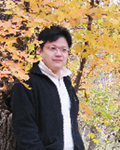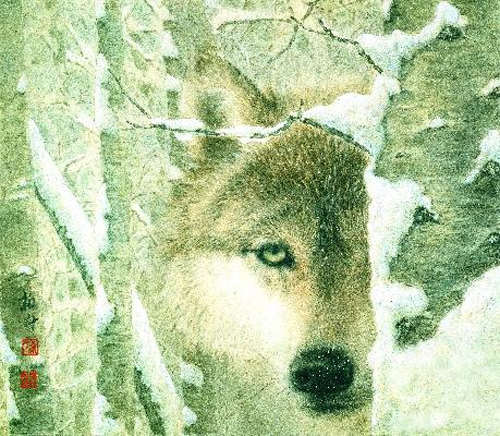|
 |
|
(COURTESY OF SU BODOU) |
"Wild animals are man's friends. They will respond and communicate with you amicably as long as you get to know them," said renowned contemporary artist Su Bodou, pointing to a painting titled Snow Wolf on the wall of his Beijing-based studio.
Su is perhaps best known for his gongbi-style paintings. This style requires meticulous brush technique and an eye for detail. Since completing his education at the Graduate Program of the Chinese National Academy of Arts, Su is now a professor at the Institute of Chinese Traditional Arts and Culture at Peking University.
Most of Su's works are focused on wild animals. He is regarded the first Chinese artist to use his works to raise public awareness of wildlife protection.
Source of creation
In 1997, Su went to Malaysia for a painting exhibition after graduating from the People's Liberation Army Academy of Arts. The success of his exhibition eventually led to a teaching job at the Equator Academy of Art. In addition to teaching gongbi-style painting at the academy, Su was also asked to create realistic human body-shaped sculptures for local temples, a task which seemed daunting at the time.
"I was really inspired by the practice and learned a lot about sculpture creation," Su said. "I was thinking about integrating the techniques of Western Cubism into the traditional Chinese gongbi painting style."
"Looking back now, it's proved to be a wise idea," he said.
Su decided to return to China in 2002, as he thought his home country would be the best environment for him to continue his development of the gongbi style.
"To be honest, I got artistically lost and confused when I was abroad, even though I was working hard and learning a lot," Su said. "I think China is my main source of creation."
 |
|
Su's work Searching (COURTESY OF SU BODOU) |
A unique style
Su had no idea where to go with gongbi after he returned, as the main subjects of gongbi paintings at the time were largely flowers and birds.
"I was reluctant to paint those subjects," Su recalled.
The frustrated artist continued to search for inspiration until a friend advised him to try painting other forms of wildlife.
Su believes he was destined to paint this way, as he has had a great love for animals ever since childhood. "I love observing and communicating with animals. Their eyes and expressions always linger in my mind, especially those that have become homeless due to human interference," he explained.
Su has also integrated people into many of his works in an attempt to demonstrate the harmonious relationship between man and nature. His paintings are vivid in appearance, but also have a great deal of sentiment buried beneath the surface. Su characterizes his works as being "reasonable with surprise", as he believes the best paintings are those that impress their audiences.
Although his paintings rely heavily on traditional Chinese styles, Su has also adopted a wide variety of Western techniques and ideas to recreate the liveliness and spirit of the animals he sees in nature. This unique combination has made Su a singular figure in the wildlife painting arena.
Su's attempts to explore the spirit of wildlife and the interaction between man and nature have won him wide recognition. He has received awards for several of his paintings in recent years. In addition, some of his works have been displayed in large-scale painting exhibitions both home and abroad.
Opening the eyes of the people
In his 2009 book entitled Su Bodou: Contemporary Chinese Artist's Portfolio, Su wrote, "Impressed by the natural charms of wildlife over a million times, I cherish life even more. I would like to share the beauty of art and raise awareness of wildlife protection by painting wildlife and nature for those who adore animals and life itself. I hope all of you will appreciate wildlife and nature, and arrive at a fruitful outcome through introspection."
Su plans to launch a global exhibition tour regarding wildlife protection sometime over the next five to ten years, in order to raise awareness of environmental protection and give something back to the world that inspired his life's work. | 